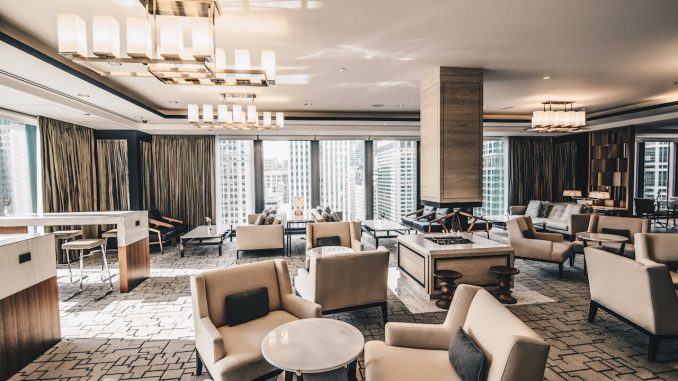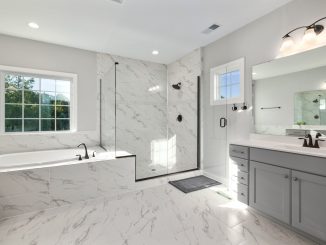
HVAC systems are the lifeblood of commercial buildings, ensuring a comfortable and healthy indoor environment for occupants. The longevity of these systems is not just a matter of convenience but also of financial and environmental importance. Extending the lifespan of an HVAC system can lead to significant cost savings in terms of repairs, replacements, and energy consumption. Moreover, a well-maintained system is crucial for maintaining optimal indoor air quality, thus promoting a healthier workspace.
Proactive steps to extend the life of HVAC systems are beneficial and essential for modern commercial building management. In this article, we will take a look at some of these strategies.
- Schedule Preventive Maintenance
One of the most effective strategies for extending the life of an HVAC system is to implement a regular preventive maintenance schedule. This involves routine inspections and servicing by professional AC repair services to ensure all system parts are operating efficiently and to catch any potential issues before they become serious problems.
Regular maintenance can prevent the system from overworking, which not only conserves energy but also reduces wear and tear. It’s advisable for commercial building owners to arrange for semi-annual inspections—before the heating and cooling seasons begin—to ensure their systems are prepared to handle the upcoming demands.
- Optimize System Load
Reducing the overall load on the HVAC system can significantly extend its lifespan. This strategy involves making the building itself more energy-efficient to lessen the demand placed on the HVAC system. Measures such as improving the building’s insulation, installing energy-efficient windows, and using shading devices can help maintain a consistent indoor temperature with minimal energy input.
Additionally, adopting energy-efficient lighting and appliances reduces the internal heat gain, allowing the HVAC system to operate more efficiently and enhance commercial air quality by minimizing the circulation of pollutants.
- Replace Filters Regularly
Regularly replacing HVAC filters is a simple yet crucial maintenance task that can profoundly impact the system’s efficiency and longevity. Dirty or clogged filters restrict airflow, forcing the system to work harder to circulate air throughout the building. This increases energy consumption and puts additional strain on the system, potentially leading to premature failure.
Commercial building managers should establish a regular filter replacement schedule, considering the building’s specific needs, such as its location, the type of activities conducted within, and the level of indoor and outdoor pollutants. As a general rule, filters should be checked monthly and replaced at least every three months or more frequently in high-demand or dusty environments.
- Ensure Accurate Installation and Sizing
The foundation of an efficient and long-lasting HVAC system lies in its correct installation and sizing. An oversized system will cycle on and off too frequently, leading to wear and tear on components and inefficient energy use. Conversely, an undersized system will struggle to maintain the desired indoor temperature, operating continuously and thus experiencing excessive strain.
A professional assessment is vital to determine the correct size of the HVAC system based on the commercial building’s size, layout, occupancy, and other factors influencing heat load. Proper installation by certified professionals ensures that the system is set up correctly from the start, avoiding common issues that can lead to inefficiencies and reduced system lifespan.
- Implement Smart Thermostat Technology
The introduction of smart thermostat technology marks a significant leap forward in the management of HVAC systems in commercial buildings. These innovative devices offer a level of control and efficiency previously unattainable with traditional thermostats. By automatically adjusting heating and cooling settings based on real-time occupancy and usage data, smart thermostats significantly reduce the operational strain on HVAC systems. For instance, during off-peak hours or when areas within the building are unoccupied, the system can dial down its activity, conserving energy without sacrificing comfort.
Moreover, smart thermostats can track and analyze energy usage patterns, providing valuable insights that can be used to further optimize settings and reduce waste. This capability not only leads to direct energy savings but also lessens wear and tear on the HVAC system, extending its operational life.
- Seal and Insulate Ductwork
The integrity of a building’s ductwork is crucial to the efficiency and effectiveness of its HVAC system. Poorly sealed or inadequately insulated ducts can lead to energy loss as heated or cooled air escapes before reaching its intended destinations within the building. This not only results in energy inefficiency but also forces the HVAC system to work harder to maintain the desired indoor climate, accelerating wear and leading to potential system failures.
Regular inspections and maintenance of ductwork are essential to identify and rectify any leaks or gaps in insulation. Sealing ductwork properly and ensuring it is well insulated minimizes energy loss, maintains consistent temperatures throughout the building, and reduces the strain on the HVAC system.
- Regular Cleaning and Maintenance of Coils and Components
The coils and other components within an HVAC system play a vital role in its operation, facilitating the exchange of heat and refrigerant flow. Over time, however, these components can become coated with dirt and debris, significantly impeding the system’s efficiency and leading to increased energy consumption and wear. Therefore, regular cleaning of these components is essential to maintain optimal performance.
This not only helps to prevent the buildup of contaminants that can degrade indoor air quality but also extends the life of the system by preventing overworking and reducing the likelihood of breakdowns.
- Train Staff on Efficient Use and Maintenance
Training building staff and occupants on the proper use of the system and basic maintenance tasks can significantly contribute to its longevity. Educated staff can recognize early signs of system inefficiency or failure and take prompt action, either by adjusting settings to optimize performance or by reporting issues to maintenance personnel for further investigation.
Conclusion
Extending the life of an HVAC system in a commercial setting requires a commitment to regular maintenance, technological upgrades, and efficient operation. By implementing smart thermostat technology, ensuring ductwork is well-sealed and insulated, maintaining system components, and educating staff on efficient use, building managers can significantly enhance the performance and longevity of their HVAC systems.
These strategies not only lead to energy savings and reduced operational costs but also contribute to a more sustainable, comfortable, and healthy building environment. Commercial building owners and managers are thus encouraged to prioritize these proactive measures to maximize their HVAC investment and safeguard the well-being of their occupants.




